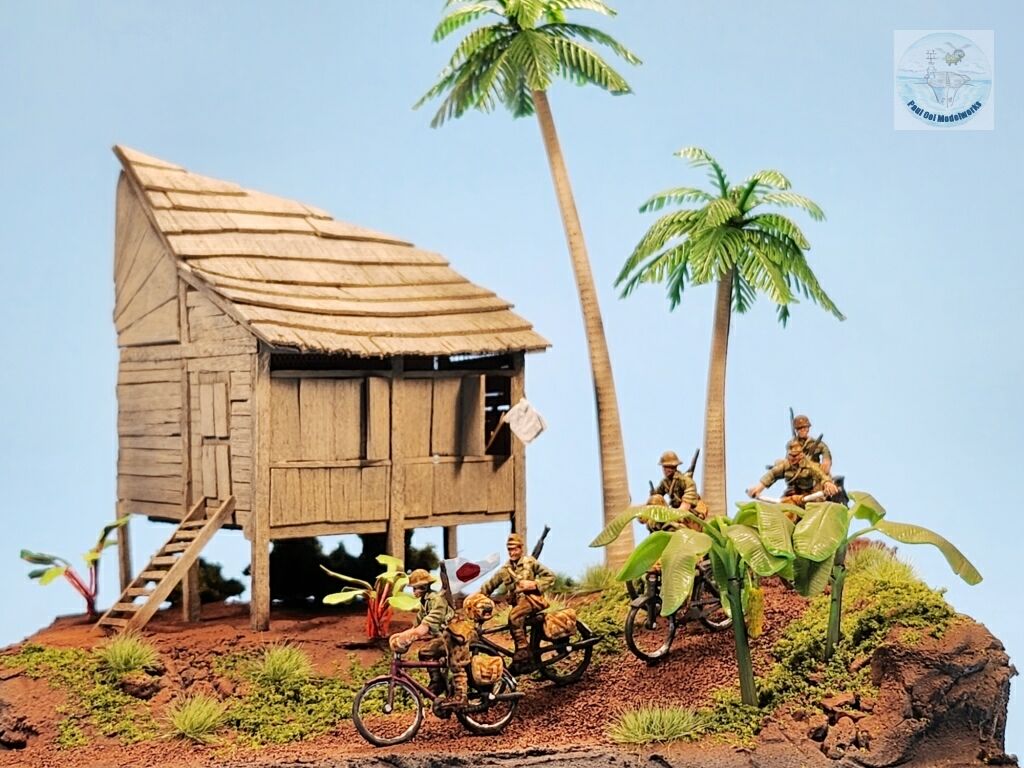
The Japanese invasion and occupation of Malaya in December 1941 had a huge impact on my own family history and changed the lives of my parents’ generation forever. The Japanese troops taking every single bicycle from the civilian population and using them to bike through the front, and by-passing Commonwealth road blocks was a story re-told many times. They used the bicycles on paved roads, village paths, and even through jungle tracks. Entire units would move on two-wheels without need for fuel, packing their supplies with them and arriving to surprise the road-bound enemy time and again. My grandfather lost his precious bicycle that he bought in 1927 but he was in hiding in a hut by the swamp when the Japanese arrived at the house.
This diorama here shows the precise moment a Japanese vanguard unit arrives in a remote Malayan village, ushering a new reality for the people. Many of the people had fled ahead of the Japanese advance and those who remain held out white submission flags. The typical Malay attap house was common throughout the country in the 1940s and normally, all the veranda windows would be opened to let the breeze in. However, on this day, only one window was open to fly a white rag on a branch. The family could be huddled inside, or may have fled to shelter even further inland. It was paradise lost that day. “Jepun datang!”, was the cry of the day meaning “The Japs are coming!”.
Gallery
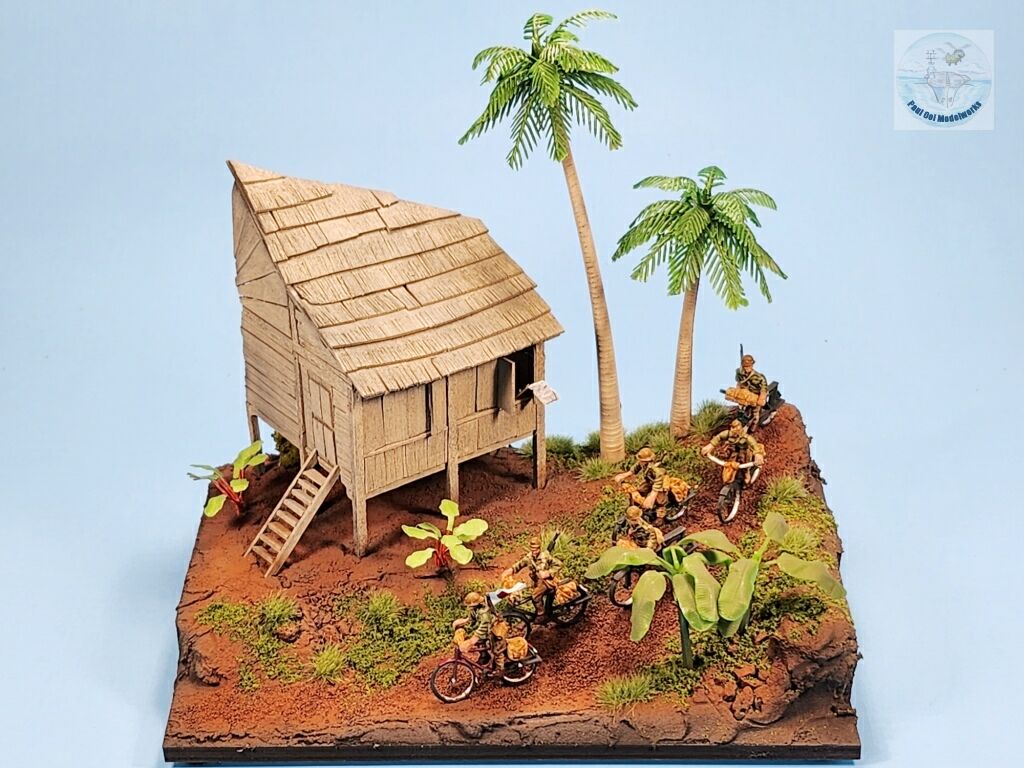
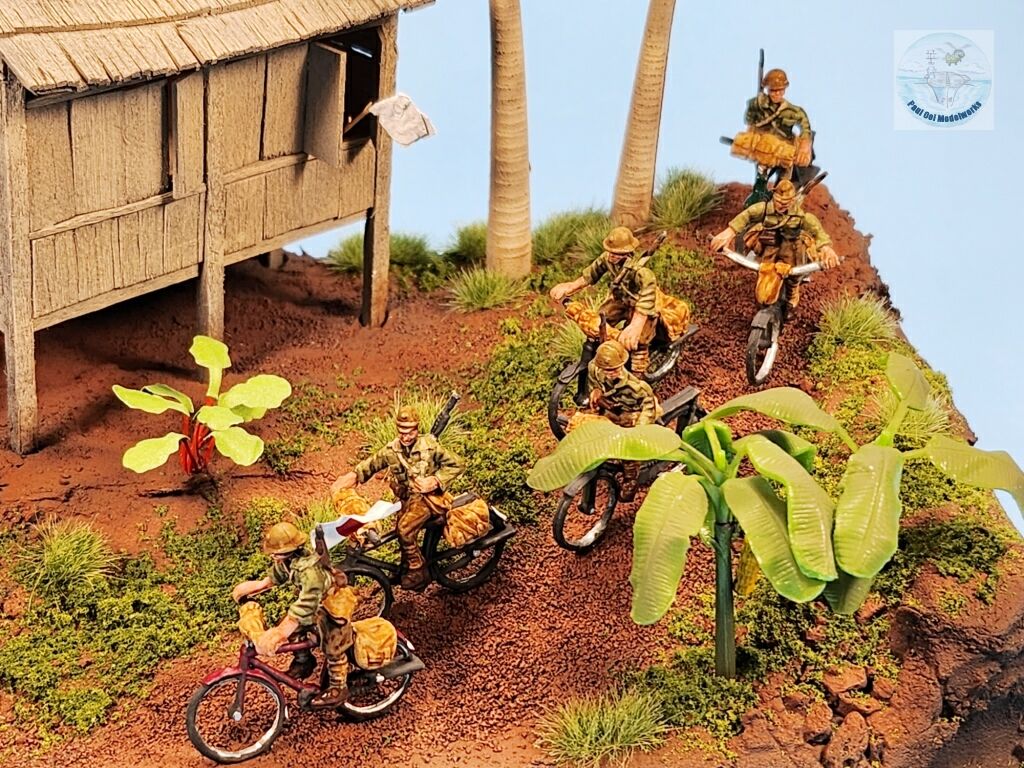
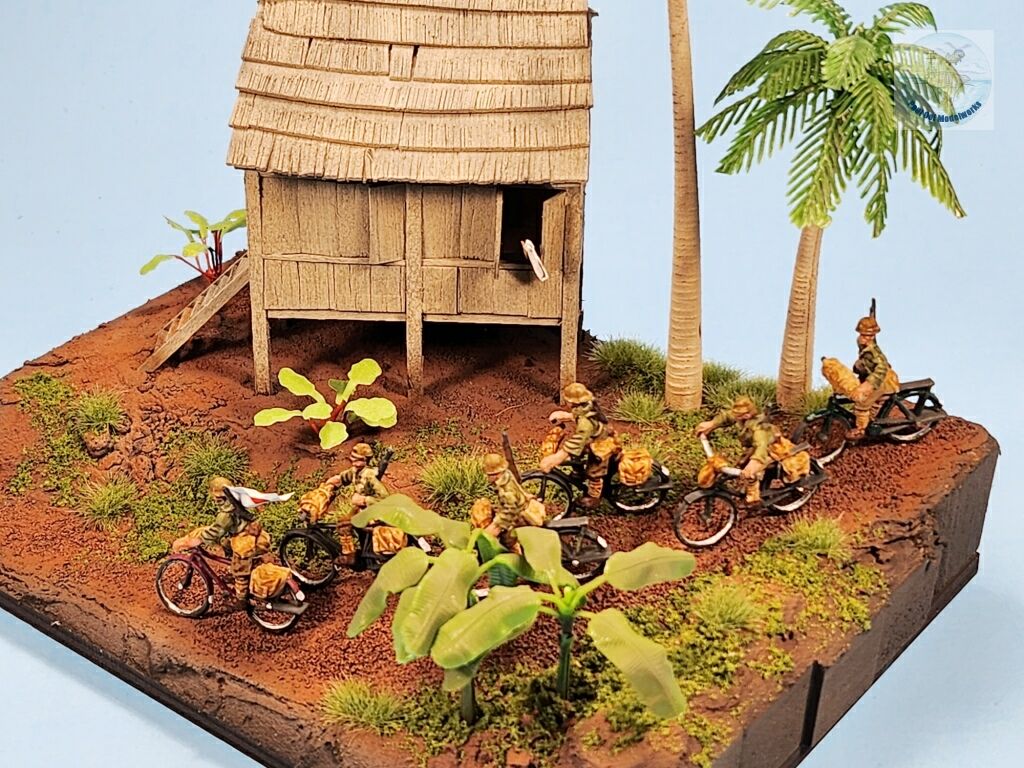
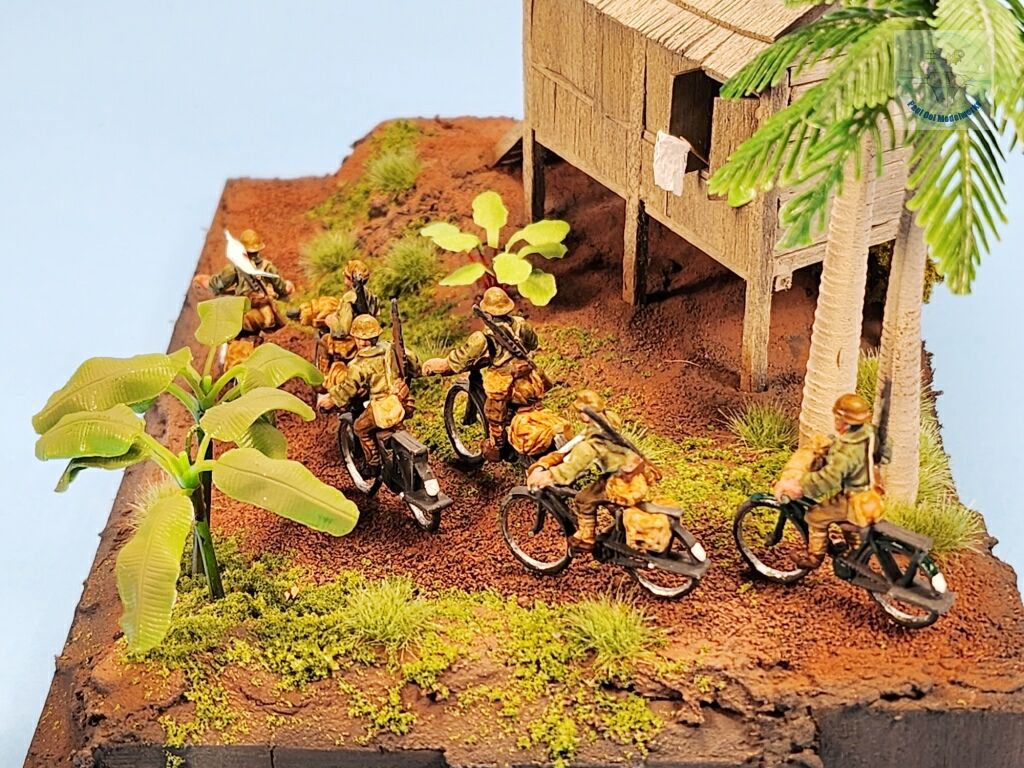
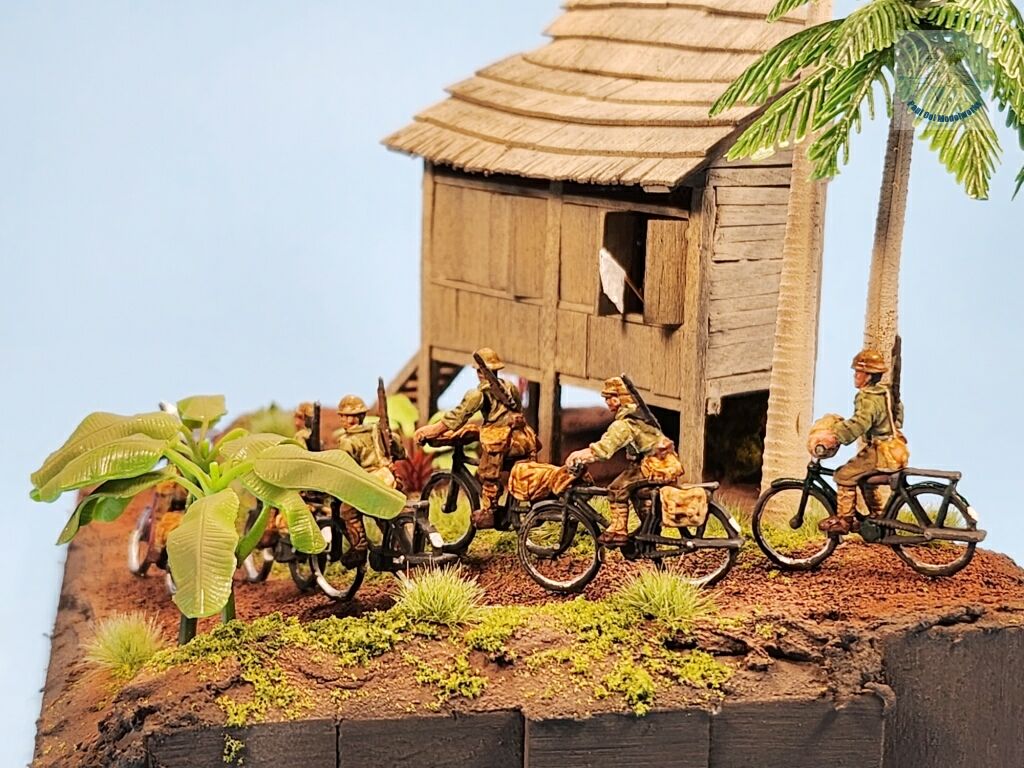
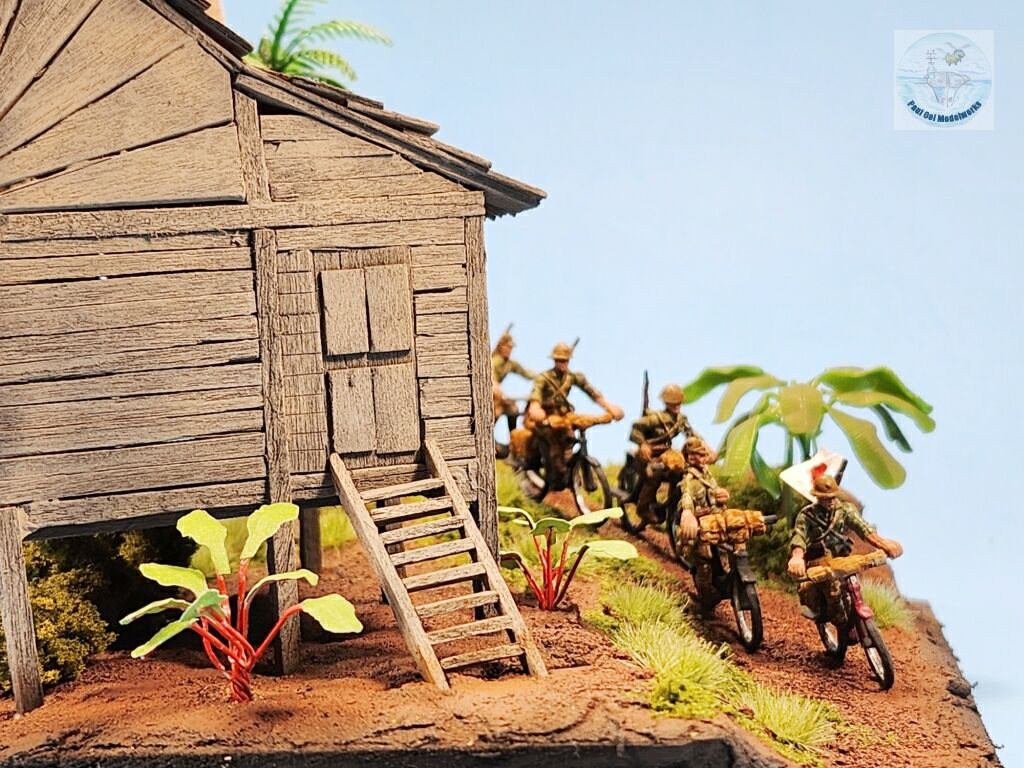
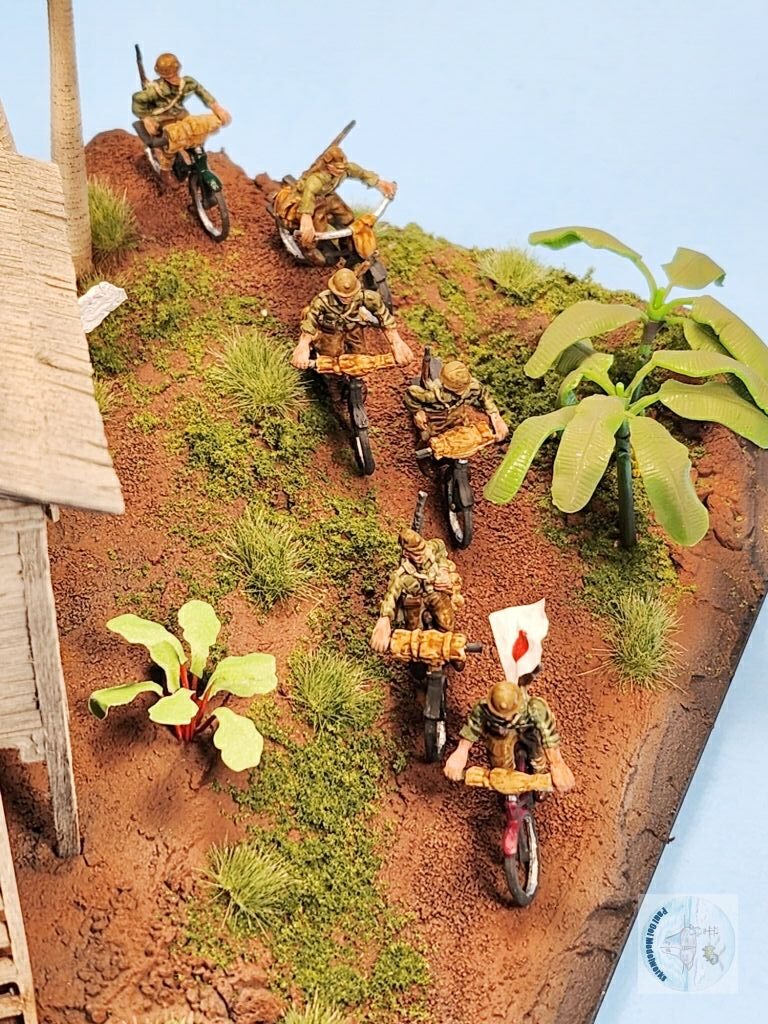
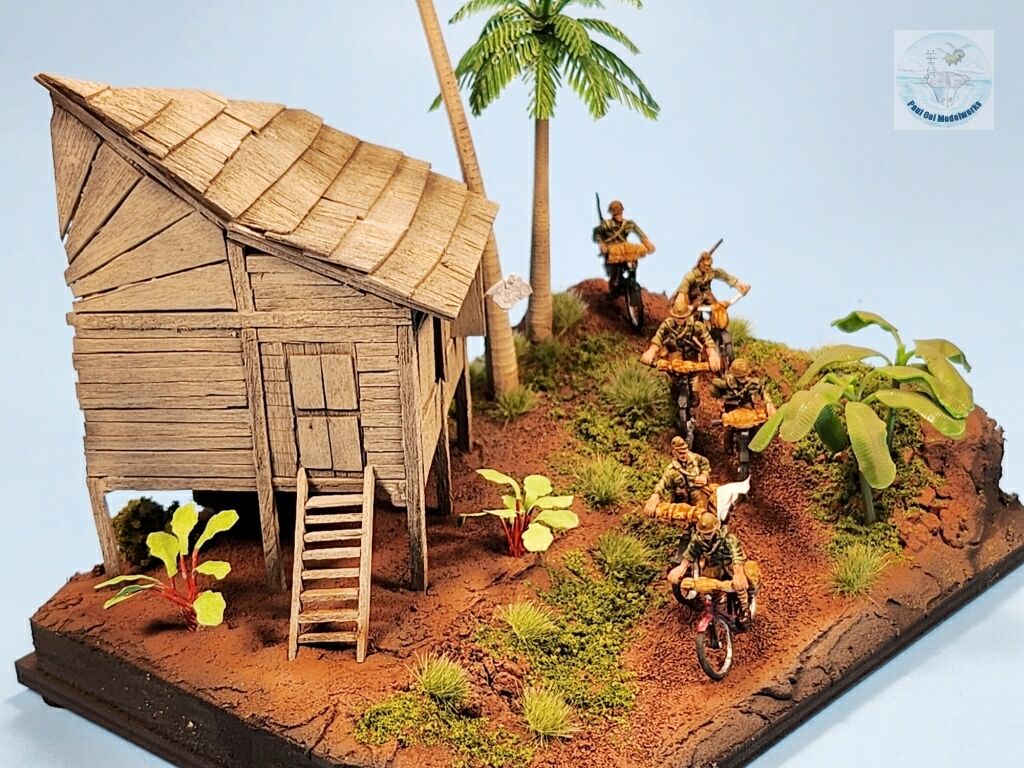
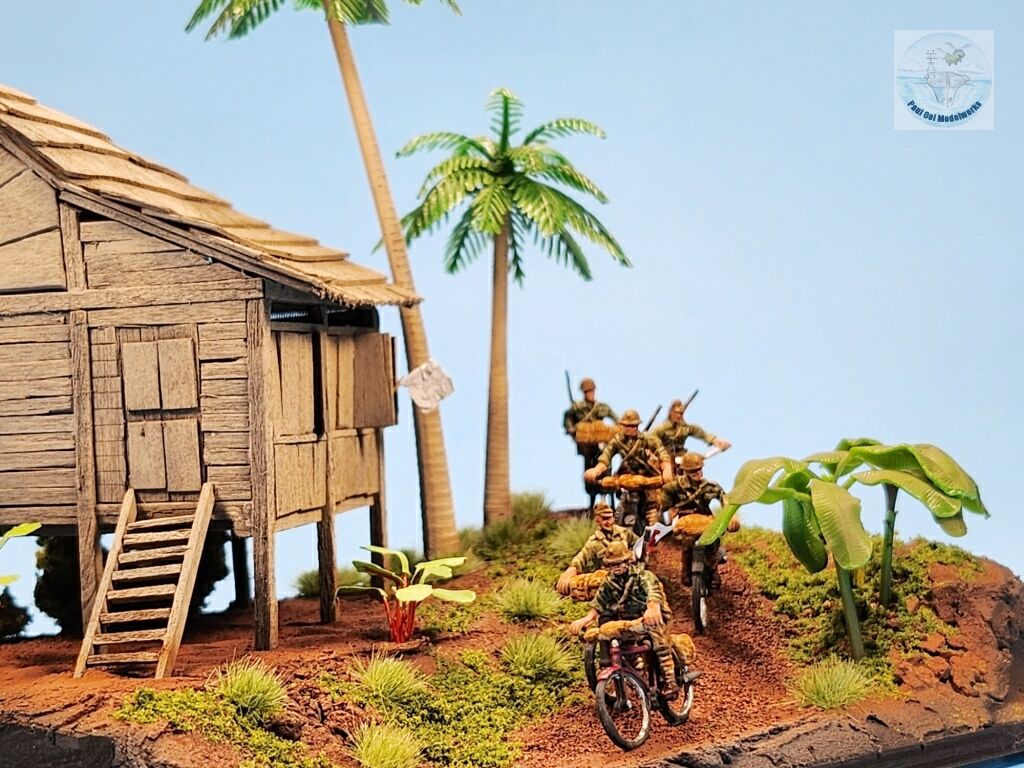
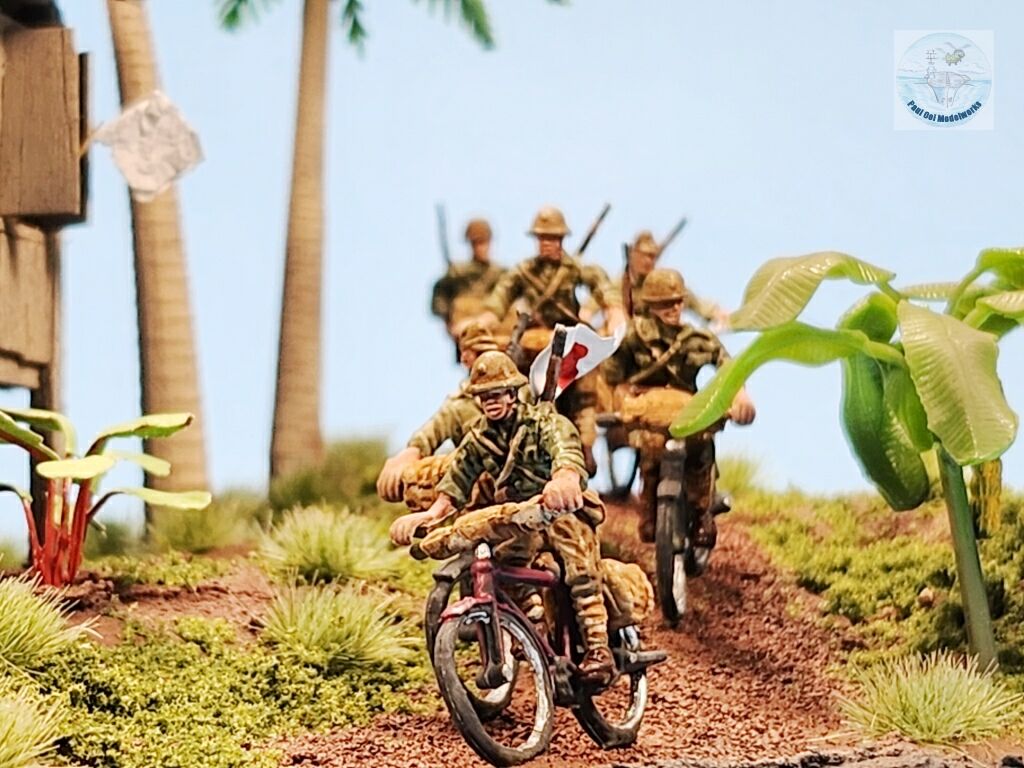
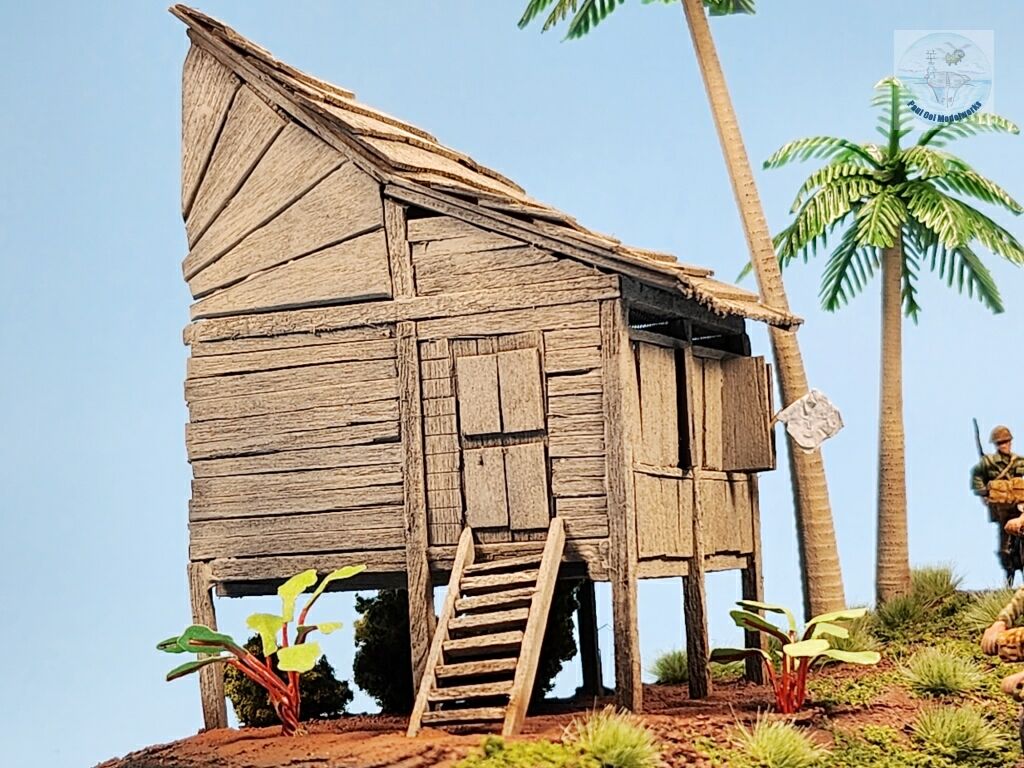
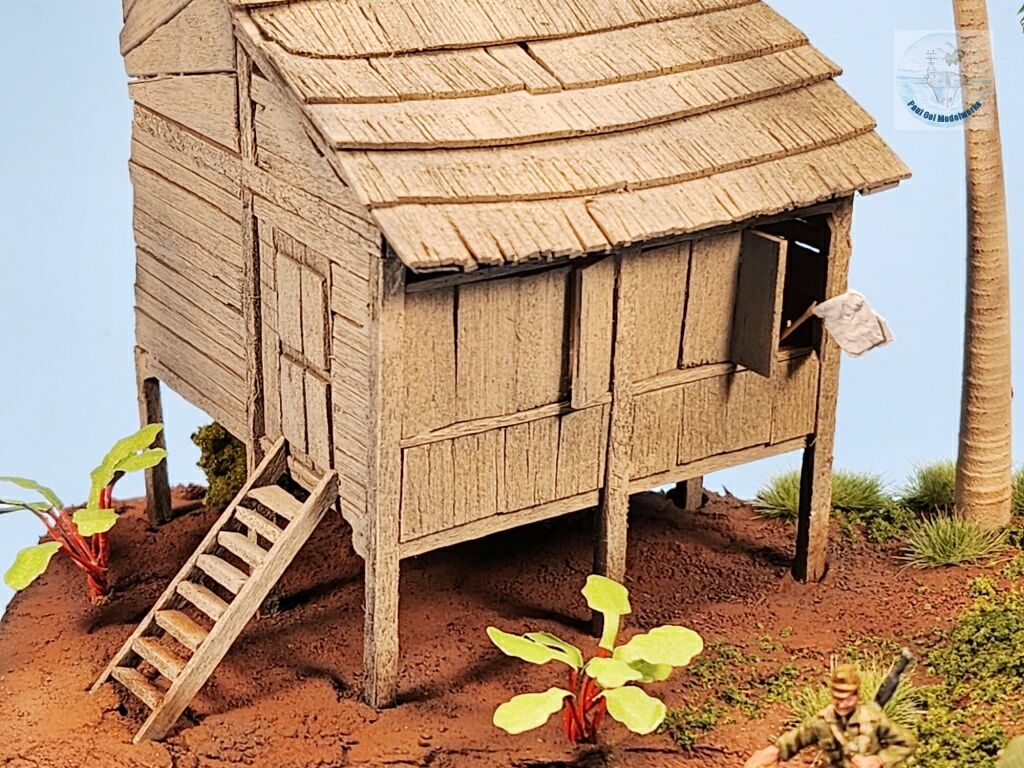
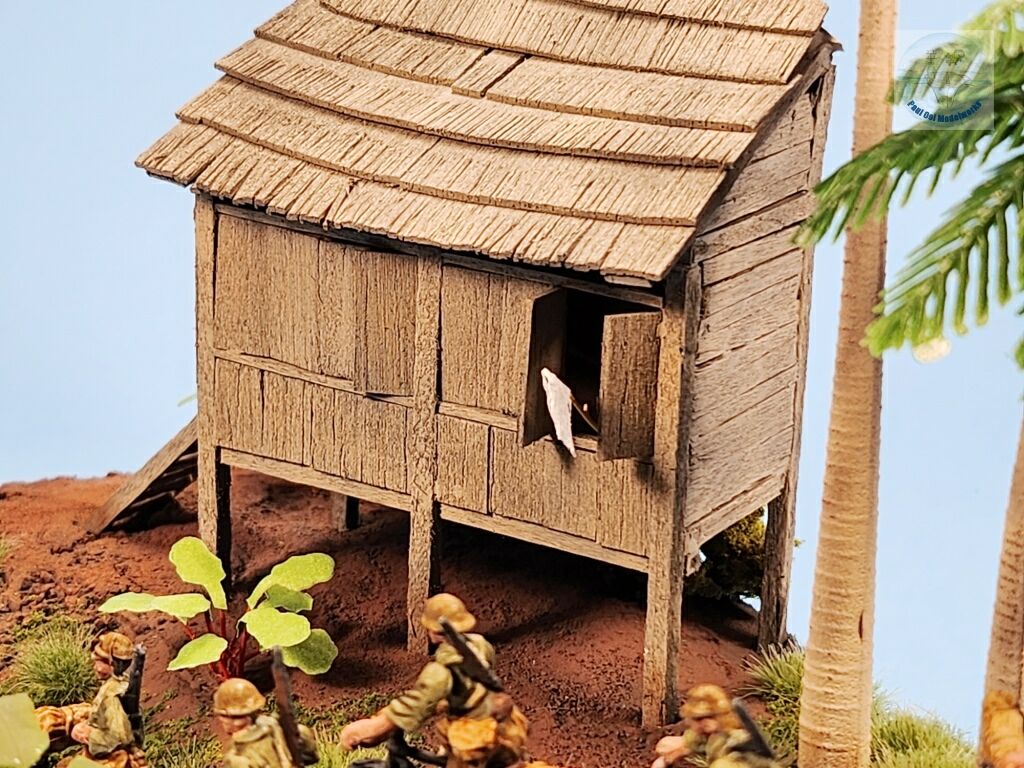
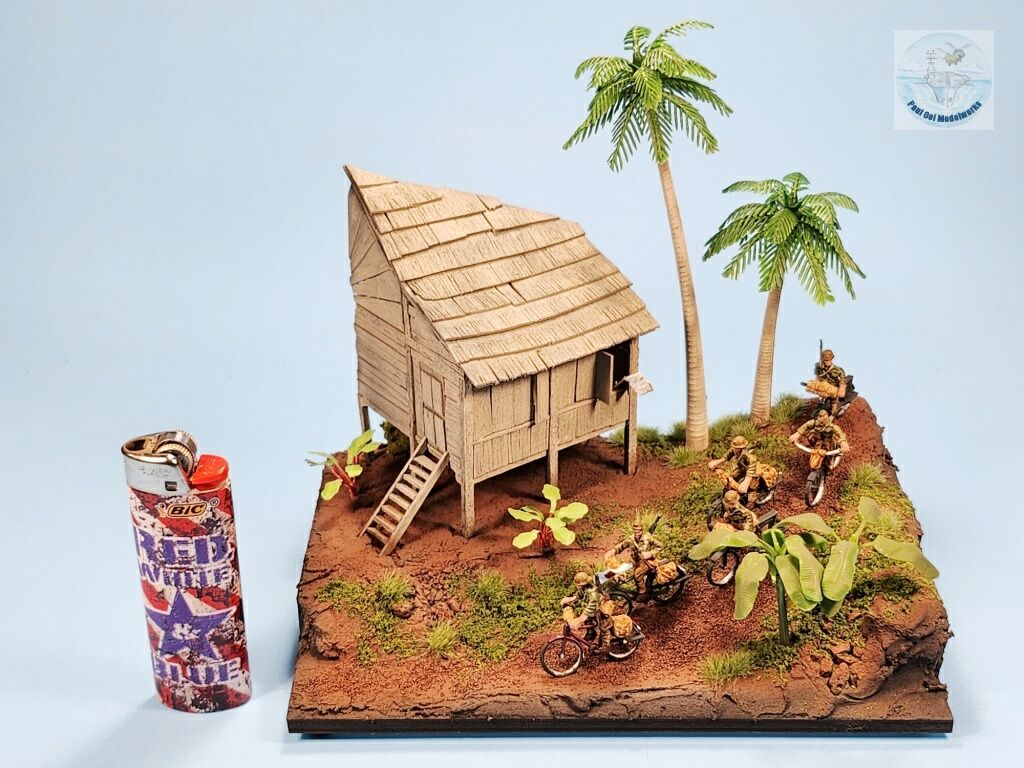
Construction Notes
This is truly a diorama build without any specific kit. What I wanted to convey was the stark contrast between the idyllic Malayan rural scene being intruded upon by the invading Japanese troops. I ventured to do this by anchoring the scene with a traditional Malay farm house, and since this is a small vignette, I could only show a portion of that building. The corner I chose is the front part of the house where the maximum number of windows are present, and normally opened for ventilation. Also, the color of the soil in the northern part of the Malay Peninsular is red due to the high iron content. The unpaved road that the troops are travelling on is made of laterite pebbles, a common feature where I spent many childhood hours on my bicycle.
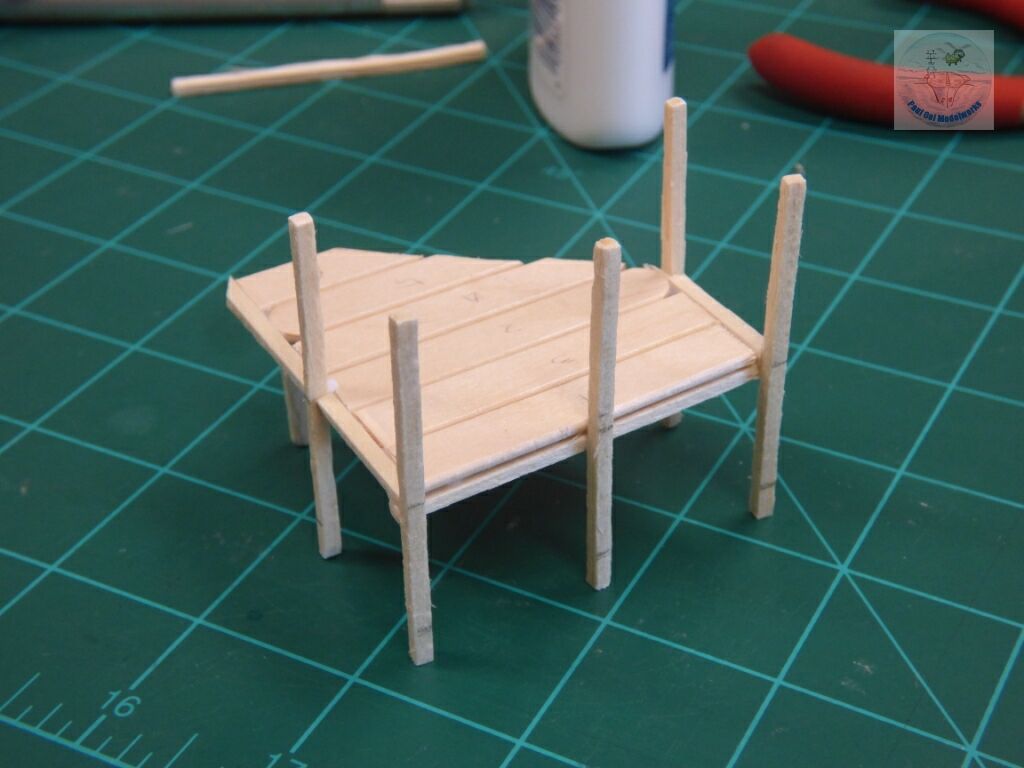
We start with the house. One of my best references is from this paper on traditional Malay houses. Many Malay houses are built on stilts as a way to stay above water during the monsoons, and also for safety from animals. So, we start with the stilts. I built mind at a 1/72 scale for 5 feet above the ground. I use a mixture of balsa, and bass wood sections for the floor. All joints are made with all purpose white glue.
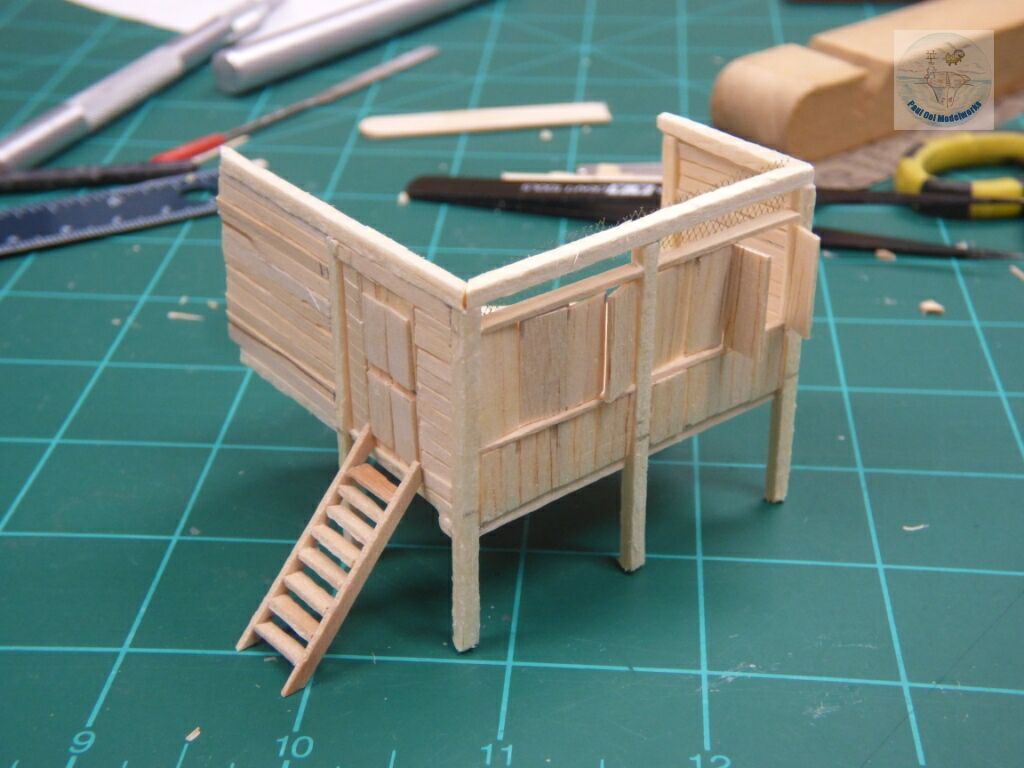
The wall sections are made with wood from coffee cup stirrers. Doors and windows are made from .125″ balsa sheets. The top ventilation mesh is made from mesh fabric. I based the house layout on various reference pictures and my own childhood memories. One important feature of Malay houses is the main staircase to the front door. This one is a fairly modest one, but many families show their affluence by the style and material of their front staircase, ranging from split level wooden ones with carvings up to elaborate mason staircases with beautiful tiles. I kept this one simple.
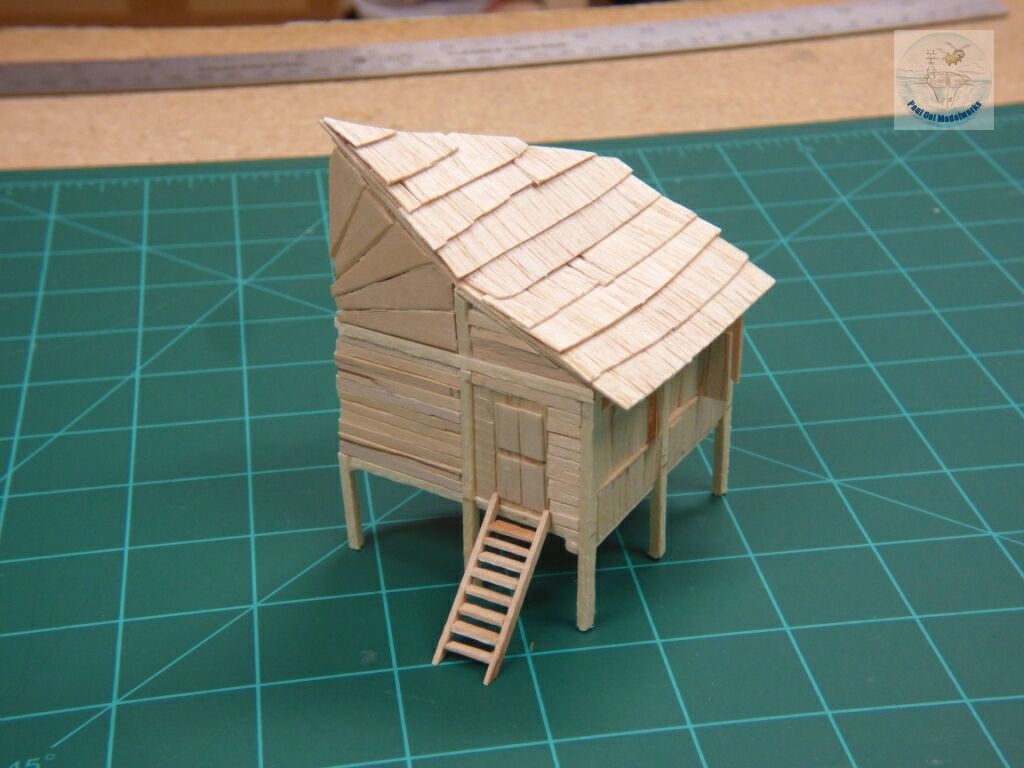
The roof is made entirely from thin sheets of balsa wood. To recreate the look of palm attap thatch (which was still prevalent in the 1940s), I cut 10mm wide strips of balsa, use an X-cto knife to carefully cut the edges into fringes, and then glue them on in layers, starting from the lowest edge. Since I have the corner of the house at an angle, the roof line is cut off, giving it a peaked appearance. A full house structure does not have that peak but reaches to the ridge line like a conventional roof.
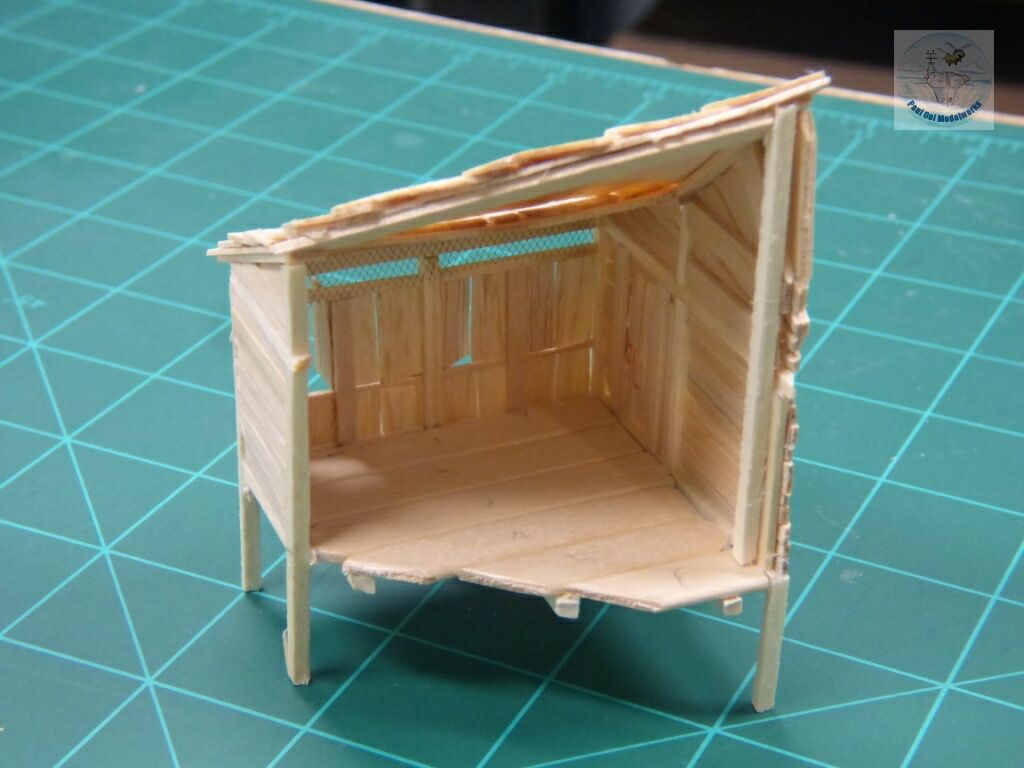
This is the rear view of the house. Since I do not intend to make any details of the interior, I will be closing off this section.
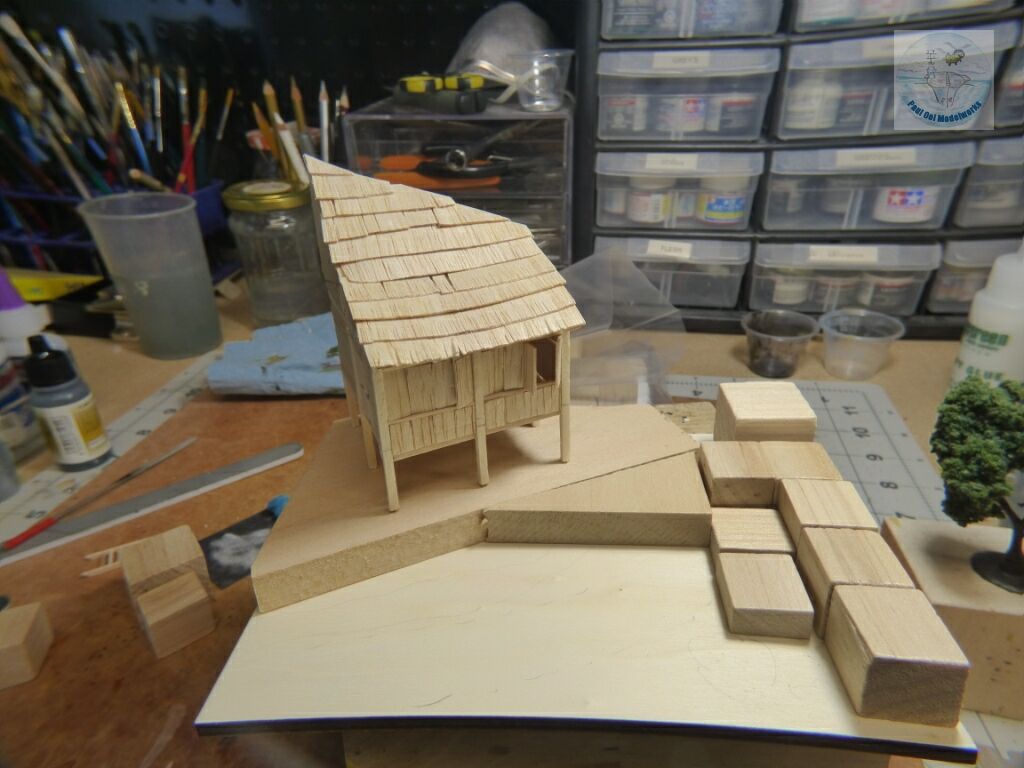
Once the house is completed, I plan the elevation of the diorama. MY intent was to have the road leading into the village come in from a higher elevation and then race past the house from right hand upper downwards to the left hand lower corner. The house itself starts lower than the road but will dominate the view at the center and right. I use pre-cut wood cubes in some places, and wood layers in others to construct this topography.
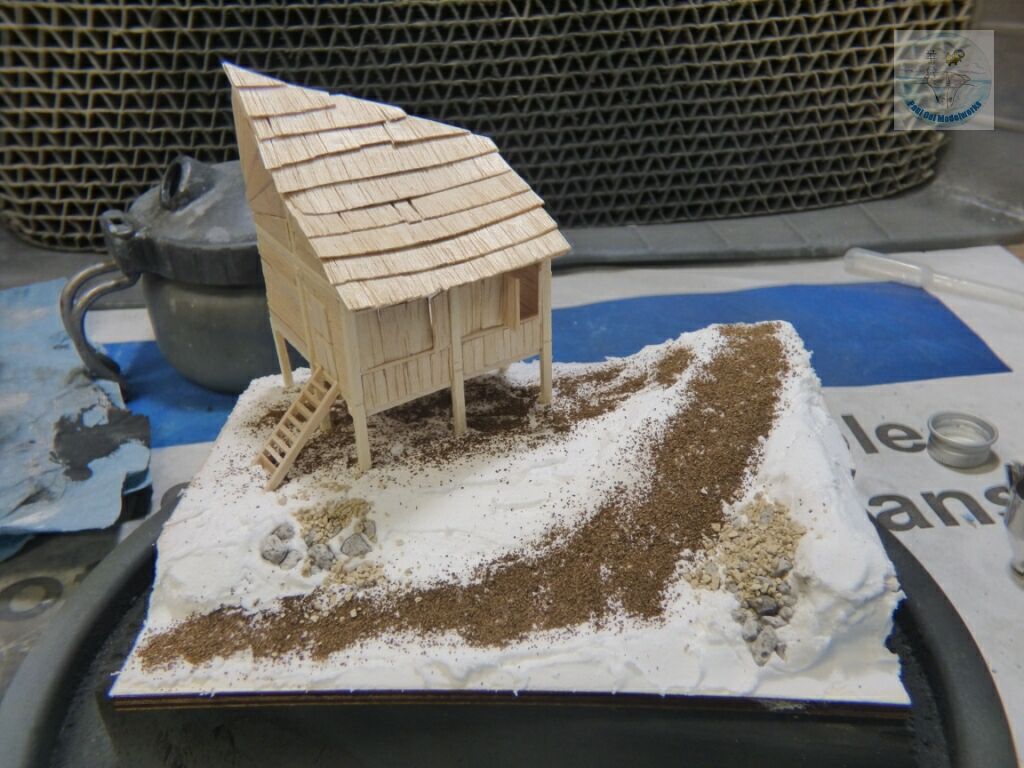
The wooden topography is then covered in plaster, add different grades of ballasts and rocks , and then the house is “fitted” to get the stilts and staircase pressed into the wet plaster. I remove the house after that for painting.
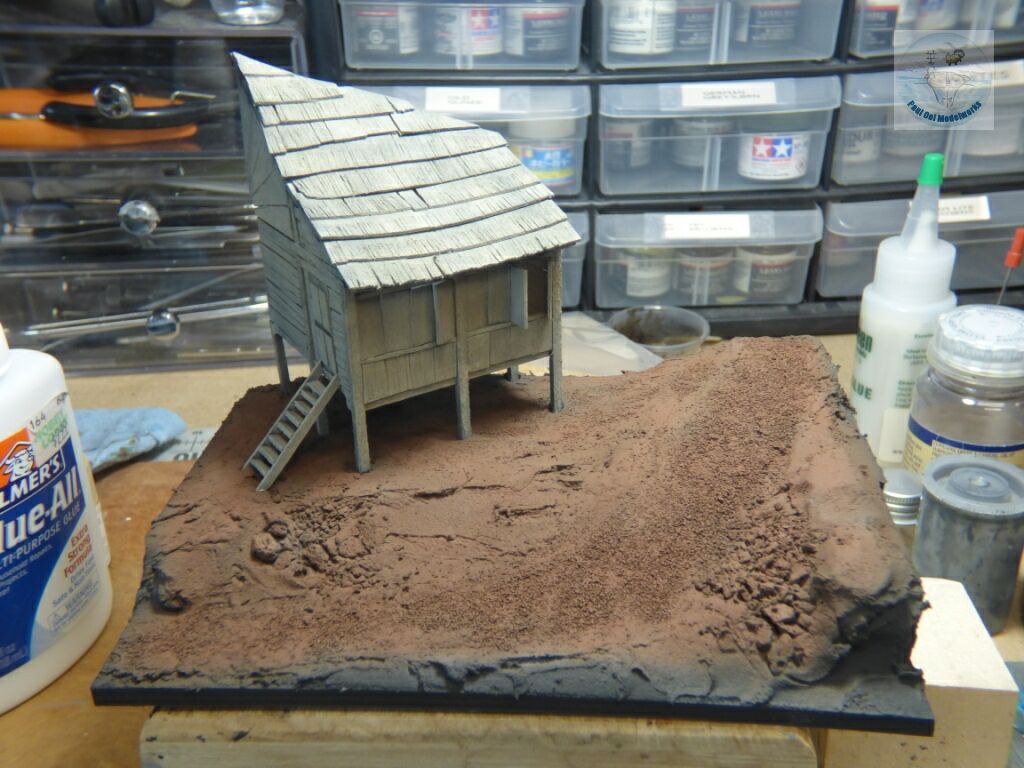
I use my typical approach to diorama painting, starting with Tamiya NATO Black on both the diorama base, and also on the house for basic shadow. Then I provide the highlights in Tamiya Sky Grey for both the base and house. For the soil, a made a mix of 60% Tamiya Red Brown XF-64 + 30% Tamiya Flat Red XF-7 + Tamiya Flat Yellow XF-3. For the house, the final color was Tamiya Buff XF-57.
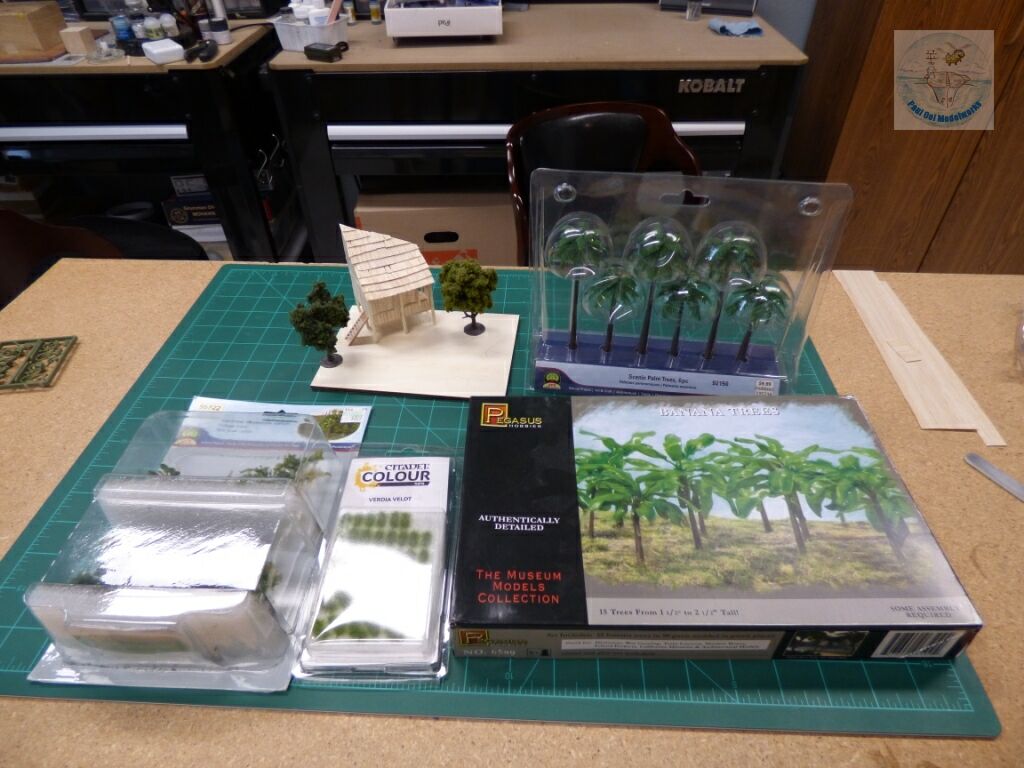
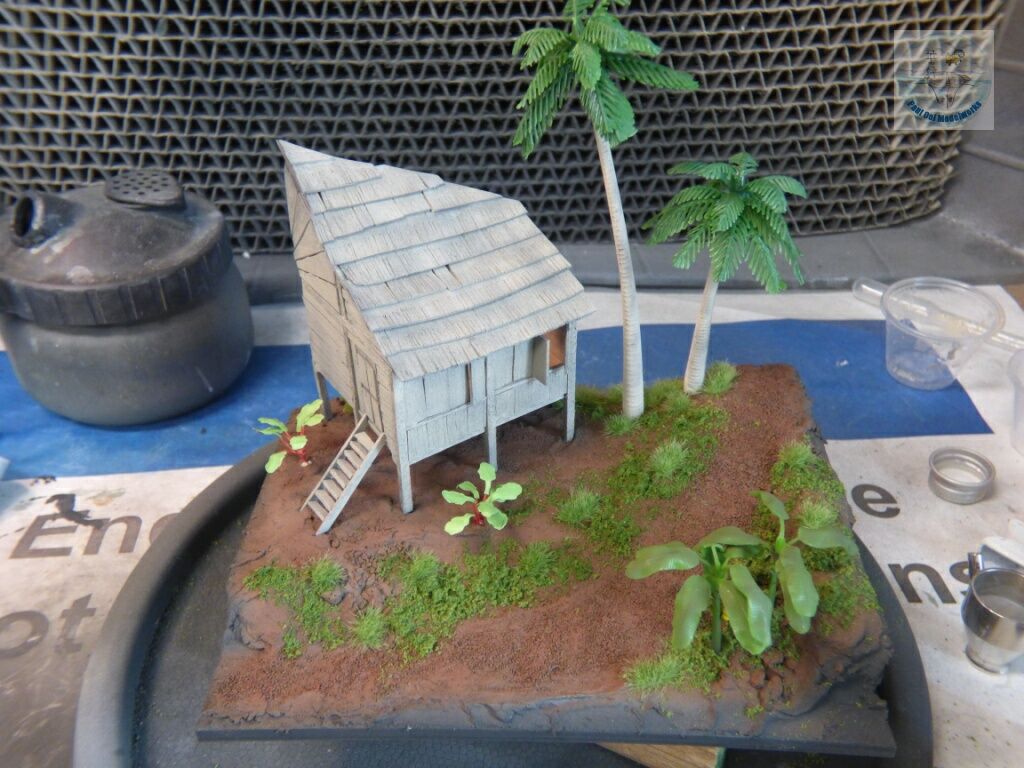
Malaya is definitely tropical, in fact equatorial tropics to be exact. We need lush foliage to get the place right, so an assortment of scale greenery is needed. However, we are showing a village scene, not the jungle and so it should not go overboard with overgrown vines and tangled undergrowth everywhere. It needs identifiable tropical plants but in a more moderate setting, like a place one can live in. Most Malay houses are relatively clear of vegetation under the stilts and at the landing because of the constant foot traffic compressing the earth.
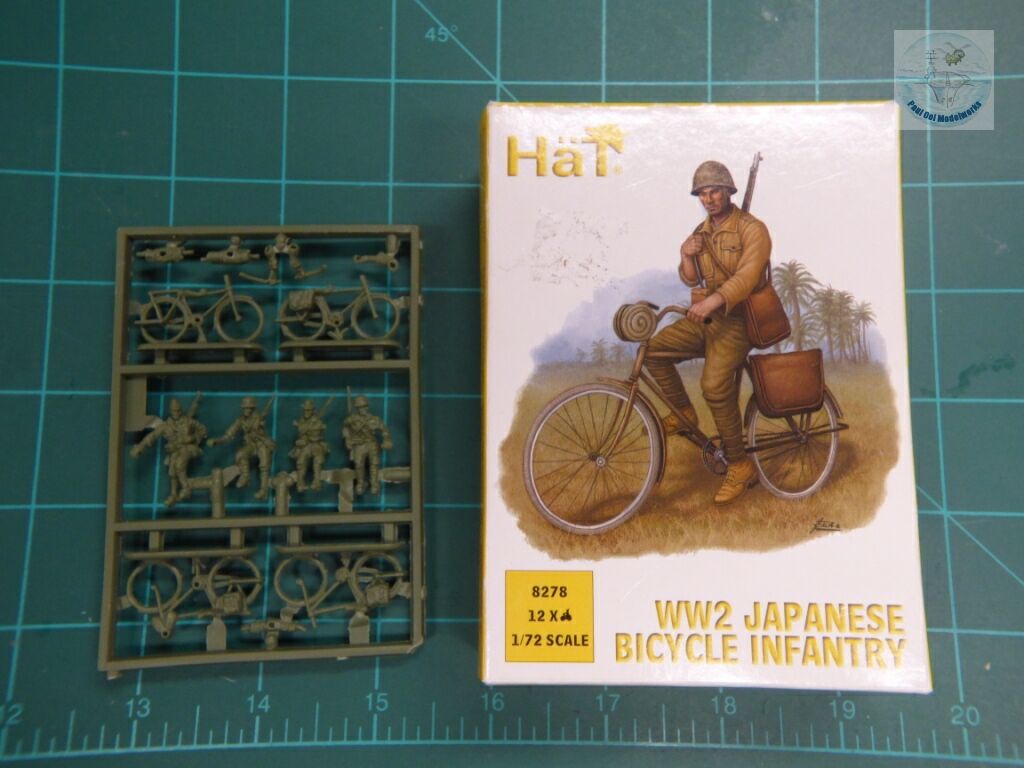
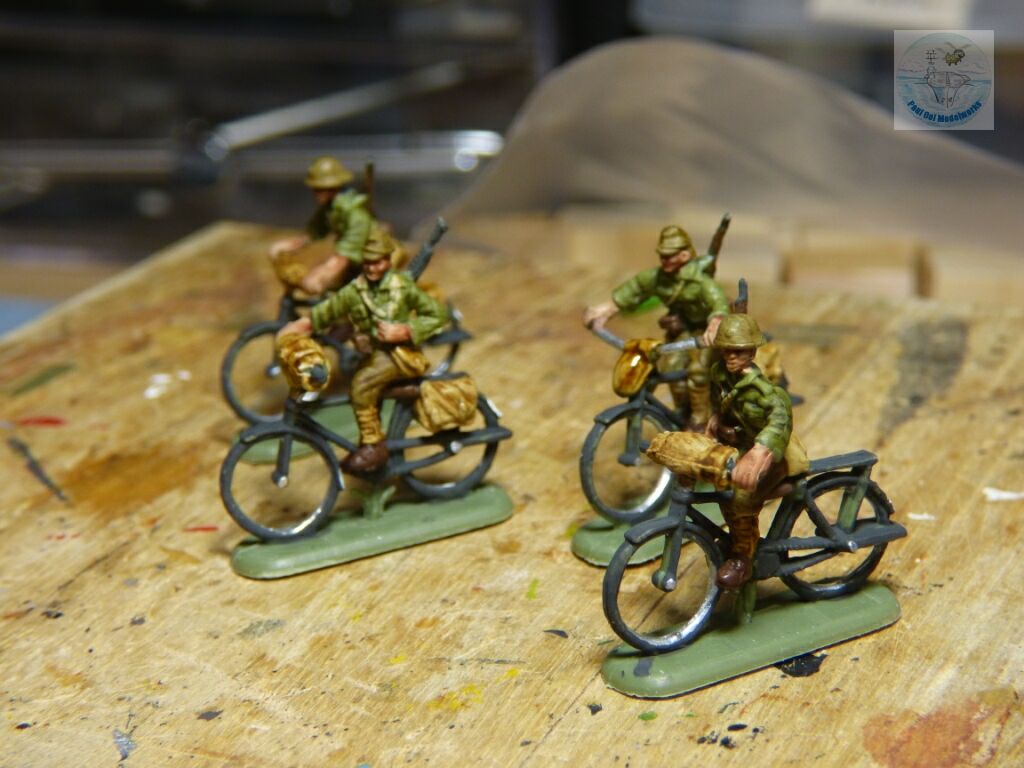
The Japanese troops are really the very last detail in this project. I use 1/72 Hat Industries excellent set of Japanese bicycle riders. The kit has 12 riders, but I really only needed 6 to convey the movement and throng. The bicycles are painted mostly black (typical of that era), with a few points of silver for the rims and handle bars. Japanese uniform colors are Tamiya XF49 Khaki for the helmets, caps, and pants, a mix of 50% Buff XF57+50%Flat Green XF5 for the shirts, and XF57 Buff for the bags and puttees.
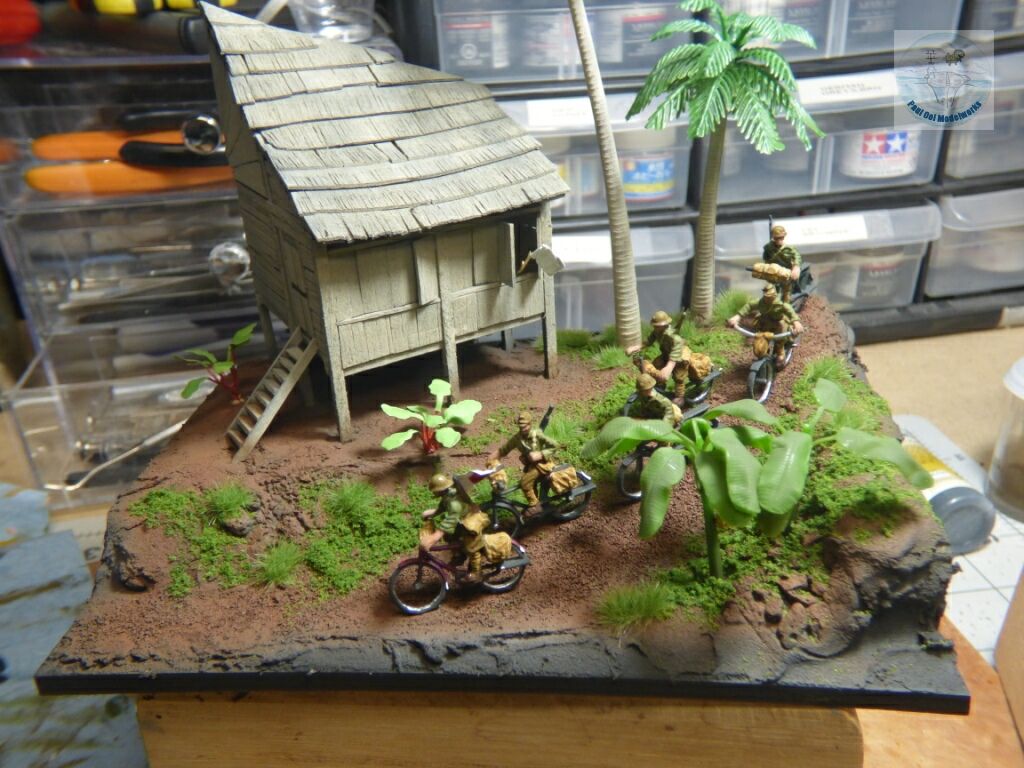
Once I add the riders into the scene, it really changes the dynamics of the display from quiet idyllic to one of anxiety and intrusion. The white surrender flag and the Japanese flag flying off the rifle of the first rider are made from aluminum foil.


Leave a Reply